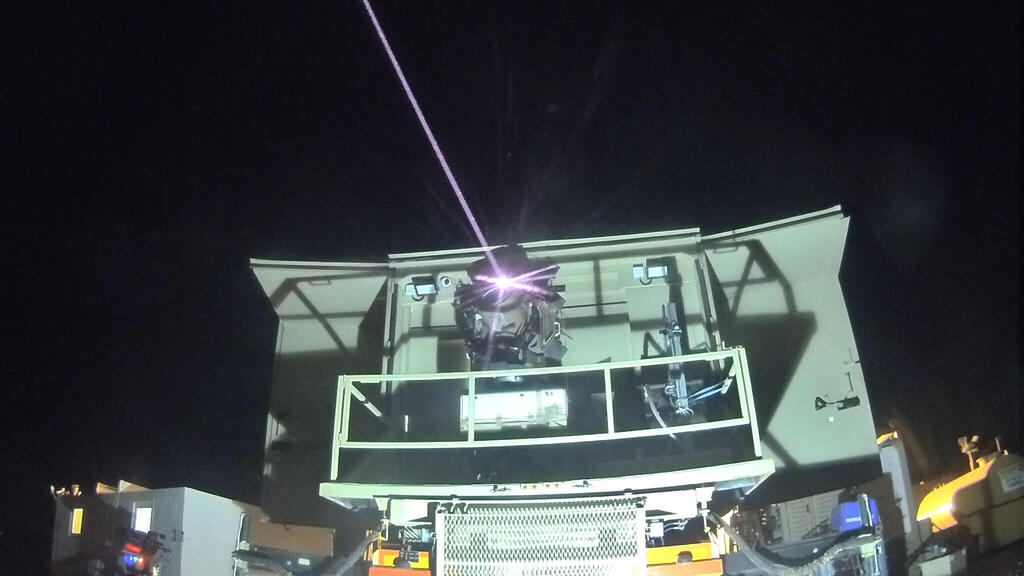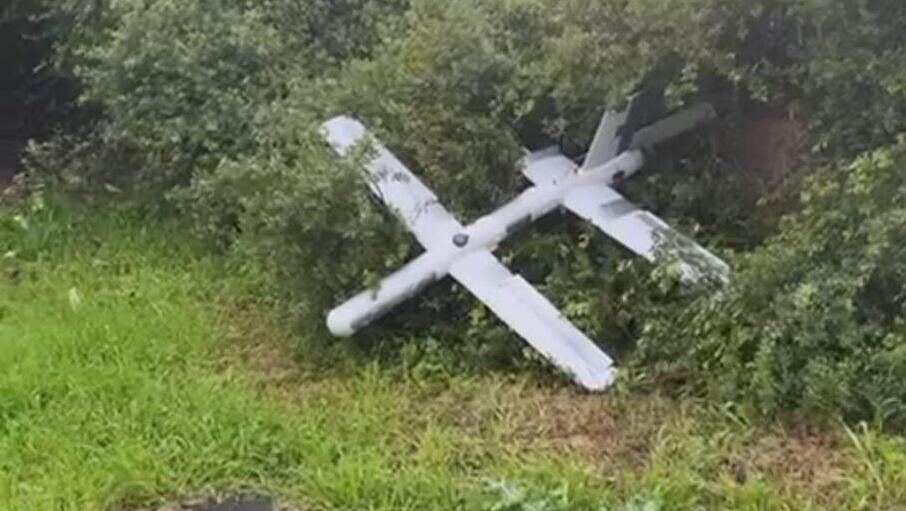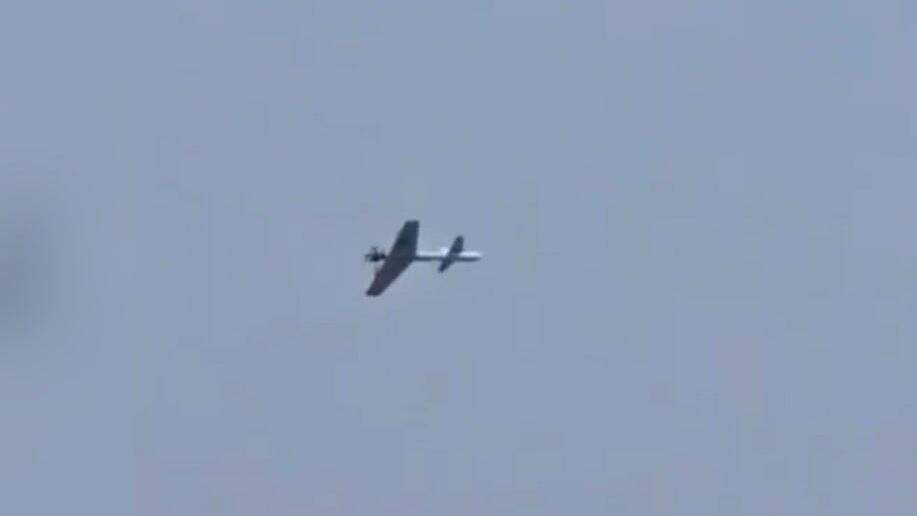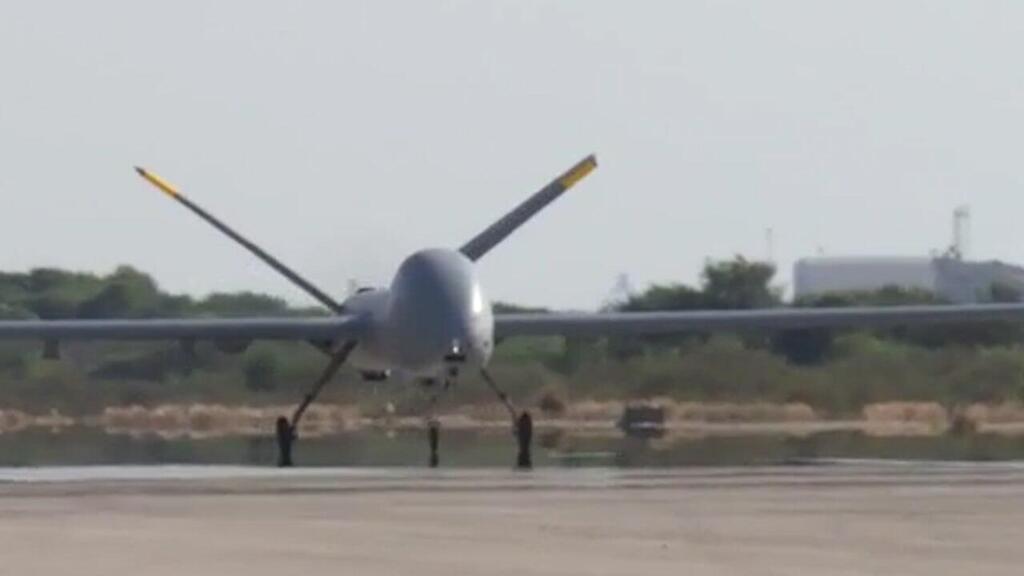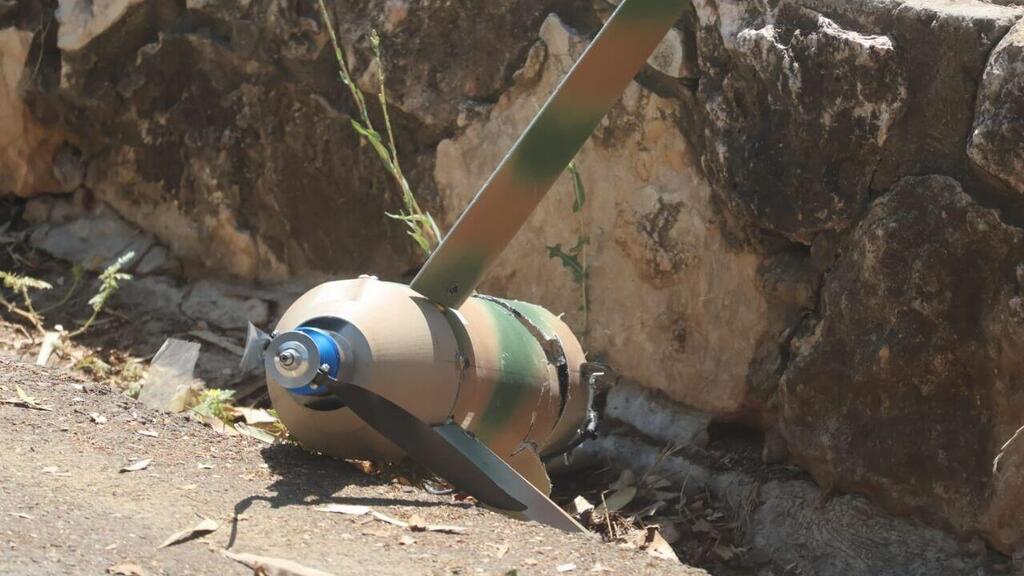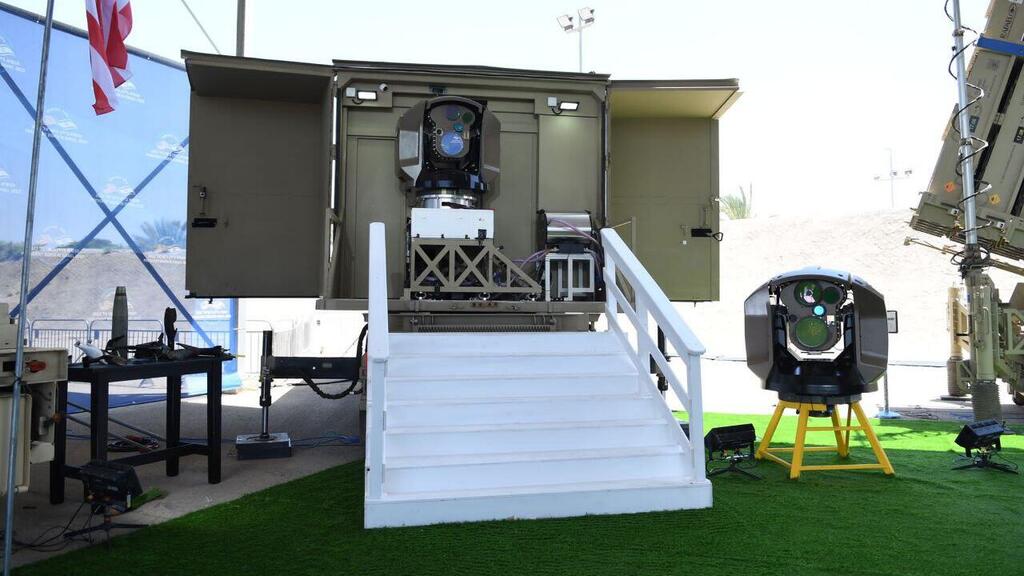Getting your Trinity Audio player ready...
As the threat of a third Lebanon war intensifies, it looks like the war this time around will include plenty of technology. The enemy is facing IDF’s AI technology with very dangerous technology of its own, primarily UAVs and precision missiles.
Hundreds of hostile aerial vehicles penetrating from Lebanon have exposed the defense establishment’s lack of sufficient readiness to deal UAVs, and the IDF now finds itself in a frantic race to find a solution to address the threat.
The aerial picture isn’t looking good. The IDF even admits so. In the months of the war, tens of thousands of flying munitions have been launched at Israel, including rockets, missiles and thousands of unmanned aerial vehicles – guided and suicide UAVs.
The IAF has managed to intercept 150 aerial vehicles, but dozens of others have penetrated defense lines, killing people, damaging property and chiefly sowing fear among the general public. Israel knew of the UAV danger, so how come they didn’t prepare an effective defense system against it? How come there’s no Iron Dome stopping aerial munitions vehicles before they crash into homes and army camps?
The truth is that such a defense system does exist, and the fact that it’s not operational on the northern border constitutes a sad tale of neglect and derision, compounded by a huge dose of internal politics. This technology is based on laser weapons, just like in Star Wars.
In recent years, American, British and Israeli defense companies have developed laser guns, and have even conducted a several successful experiments and were just waiting for the green light to push ahead with their R&D. This green light never came. There were always more important things to budget.
Maj. Gen. (res.) Prof. Isaac Ben-Israel, Director of the Interdisciplinary Cyber Research Center (ICRC) at Tel Aviv University, head of the Directorate of Defense Research & Development (DDR&D) and Chairman of Israel’s Space Agency says that the Defense Ministry has already identified the need and commissioned development, and that the system has already had its baptism of fire in Gaza.
“The reason that laser systems aren’t regularly deployed on the norther border is, as usual, lack of budgeting. The system was proposed for full development five years ago, but wasn’t budgeted by defense ministers from the right, left or center, for the past five years.”
Can the lasers now be put to use on the northern border?
“For that we need, firstly, to complete the system’s full development, and secondly, for there to be enough for all needs. But this will be one of the main issues investigated in commissions following all of these events. It was five years from the day Amir Peretz decided to budget Iron Dome, to the day it was deployed. You can’t buy back time in which you did nothing.”
Ynet recently reported that the Defense Ministry budgeted the defense industry with hundreds of millions of shekels using an ‘open check’ to come up with an effective solution to the problem. Goals included: improving Iron Dome so as to be able to detect UAVs, disrupting UAVs and reinstating the legendary Vulcan anti-aircraft guns. And what about laser guns? They’re not expected to be operational anytime soon.
Nothing offers 100% protection
The World’s Unmanned Aerial Vehicle Conference will open next week in Jerusalem’s International Convention Center (Binyanei Ha’uma). It is to deal with the use of drones for delivery, tasks and logistics, agricultural work, professional photography and lots of further uses to do good. But these are somehow now all dwarfed by the current, blatant and dangerous use of drones designed to do evil. The conference will also, perhaps mostly, deal with this.
Incidentally, drones, unmanned planes, SUAs and UAVs are all small unmanned planes and despite their differences, they can be referred to as synonymous, as the interviewees for this article do.
Former IAF commander Maj. Gen. (Ret.) Eitan Ben Eliyahu, serving as conference chairman, is clearly very fond of the subject of unmanned aircraft. “Here’s something interesting for you,” he says “The Wright brothers took their first flight in 1903 and only 40 years later, warplanes and bombers took part in the war. So here too, the idea of an Israeli drone was born in the 1970s following the War of Attrition, and we’re now 50 years on.”
Ben Eliyahu cites Israeli UAV and SUA development as means to improve the Air Force’s work with the assistance of ground forces. “To operate from the air, you must facilitate operational freedom for planes working together with the troops on the ground,” he says. This can task be achieved with unmanned planes.
The second task is obtaining intelligence. Ben Eliyahu shows me a 1973 aerial photograph taken from a plane where you can see the Egyptian armored vehicles assembled on the edge of the (Suez) canal, waiting to cross.
He says that when IAF commander Benny Peled saw this picture, only after the war, he realized that Israel could have easily bombed the Egyptian forces and perhaps avert the Sinai invasion. "This reinforced his understanding that he needed to create intelligence gathering and analysis capabilities for the IAF’s inner circle” he says.
Ten years later, as Ben Eliyahu was serving as munitions officer at the AIF headquarters, incorporating drone attack capabilities was on the agenda. “There was conversation between the air force and the defense industry as to whether we needed suicide vehicles or vehicles that could carry arms. We were very naïve. We couldn’t tell which was more complicated.”
Ultimately, both were developed, the most important being the Zik (Elbit Hermes 450) weapons system, kept under a veil of secrecy until two years ago. The Zik is a UAV designed to assist ground troops, carrying bombs capable of destroying tanks and APCs.
The conversation about developing UAV capabilities in the IAF and IDF illustrates how our side is thinking up more and more uses of drones on the battlefield, but isn’t actually thinking about the enemy using them too.
Over the years, we’ve seen reports (of UAVs in action) from the world - from the war in Ukraine and UAVs intermittently penetrating into Israel, including the 2022 attack on an Israeli gas field. These attacks, however, are always regarded as esoteric and have been met with the typical Israeli “It’ll be okay.”
In August 2022, the Institute for National Security Studies (INSS), published a detailed report penned by Eden Kaduri, Liran Antebi and Meir Elran, outlining the UAV threat and describing, almost to the letter, what’s going on right now.
“Israel must assume that the UAV component will serve as an additional layer to projectile fire. This combined threat demands dedicated responses, primarily those addressing scenarios of launching large-scale swarms to be expected in combined air attacks, that would enable attacking essential infrastructure, military and security installations as well as civilian population centers by various means.
"Building up advanced defense capabilities is necessary for dense defense against a variety of different kinds of possible attacks, especially within an ongoing, wide-scale conflict.” In practice, none of this was done."
Eitan Ben Eliyahu, what isn’t working right now in defending the skies in the north?
“The irritating threat is that of UAVs. To shoot down an aerial vehicle, you have first to detect it, then acquire the target, then lock onto it, and then aim the means of destruction at it.
Detection is conducted either by human observation or by radar, which has its limitations in that it needs a line of vision. It can’t shoot down a drone if it can’t see it hidden behind a hill. The higher, faster and bigger the aerial vehicle is, the better the detection.
But the unmanned planes are small, slow and fly low. They’re launched to short range so their airborne time is short and you don’t have enough time to send in a vehicle to shoot them down. It’s one of Hezbollah’s most effective tools that, unlike ballistic missiles that have a set flight path from the moment they take off, you can’t tell where a UAV is going and you can’t alert the target area. So, to be on the safe side, you send warnings across wide areas.”
So, here we have it, we found solutions such as Iron Dome and David’s Sling to address threats faced by Israel, but we just can’t find a solution for the UAVs?
“The answer is that there are no solutions for the weak links in addressing the problem. There is one solution: At such a time we have laser systems that are small enough to move from one position to another, and energetic enough to attack UAVs, we’ll be able to create defense along the border to detect UAVs and launch laser beams to bring them down.
"We’re very nearly there. The problem is that it depends on the weather, and it can’t operate with clouds there. So, like we always say – there’s no such thing as 100% defense.”
Offense is the best defense
The IDF is currently making efforts to deal with the UAVs and the Defense Ministry is trying to speed up developing new, more effective means against UAVs. The current budget to improve IDF capabilities is earmarked for acquiring Rafael’s Typhoon and Mini-Typhoon guns, and developing means to address the threat of UAV swarms using anti-aircraft guns. All this should have been done maybe five years ago.
We see that Hezbollah, on the other hand, did prepare well for this war. It launches drones photographing the field from immense height, like the Hodhod drone pictures taken over Haifa and published last week. Using civilian technology, it can identify IDF radar beams and dead areas through which the UAVs can penetrate the country.
It can also home in on IDF radars and launch explosive UAVs at them. Hezbollah sends dummy UAVs to draw IDF fire and then, instantly, launches the genuine UAV. This is how they destroyed the IDF Sky Dew intelligence balloon a few weeks ago.
Hezbollah also managed to take down five Israeli UAVs, some of which were large and costly. It’s believed that if the war escalates, the IDF will learn of yet more dangerous technologies, such as operating UAV swarms and precision missiles – a particularly evil class of UAV.
Prof. Ben Israel, were we caught off-guard?
“Why is this a surprise? On October 7, we were caught off-guard for an attack using guns, pistols and knives. We were caught unprepared because we weren’t on standby. We didn’t do what had to be done. The same goes for UAVs. But, without dismissing any casualty, the loss of life from UAVs has been very low. After the war, each side will look to see what worked for them and what didn’t.”
If you were currently advising the Israeli government, how would you advise defending the northern border?
“One of the things that needs to be done, that they’re not doing, is attacking the attackers. Not just shooting down what comes, but rather attacking the bases they’re coming from. Most of the IAF’s offensive operations are assassinations of senior Hezbollah operatives, that fall within the category of conveying messages. But let’s imagine the situation gets out of control and there’s an all-out war, you’ll need to attack the launching pads alongside a ground forces invasion of Lebanon.”
Former IAF munitions officer Ami Dagan was among the initiators of the Zik at DDR&D. He currently advises the UAV Directorate at DDR&D and the Civil Aviation Authority (CAA) in the field of UAVs. He says that neither the defense establishment nor the CAA are looking for solutions for attack (suicide) UAVs.
“There are a few companies in Israel, and there are products out there that I hope are better than what Hezbollah has.” He cites technology by Elbit, IAI’s Mbt Missiles Division Systems, Rafael’s Avionics and Israeli company, UVision, which produces suicide drones.
When they develop these tools, they must take into account how to avoid having them shot down. So, aren’t these the very tools we need to protect ourselves from UAVs?
“There’s a broad range of options for aerial defense such as. corrupting GPS, blinding it. But there are all kinds of technological means to eliminate this corruption and you can find them online. To address this, you need a large number of small, cheap systems like the ELTA or RADA-produced radars. Then, you can detect these things and kill them with anti-aircraft missiles.”
Wouldn’t laser guns be better?
“Yes, but that’s not a product that exists yet. Guns that fire bullets are a cheap product that can serve as part of the solution – even if it is Second World War technology. I don’t see any science fiction here. The Keeney Anti-Aircraft Machine Gun is no longer used in the Air Force. Maybe we should bring it back.”
Microwaves and soft defense weapons
Not everyone believes anti-aircraft guns are the solution for the State of Israel in 2024. Certainly not the defense industry. The technological defense arsenal currently being developed in Israel and across the globe is truly extraordinary.
Several companies, both in Israel and overseas are developing laser weapons with power of 100 – 200 kilowatts, particularly effective against mortar bombs, short-range rocks and UAVs. The Americans are developing laser guns to protect gunships as well as lower-power lasers to protect ground forces on the battlefield.
Last April, the Wall Street Journal reported that the US and Israel are looking into using microwave weapons alongside the laser weapons in the pipeline. Microwave technology, produced by the American company Epirus for example, is designed to destroy the UAV’s electronic system, causing it to crash. It’s also effective against large UAV swarms – and this is what makes it so attractive.
Rafael and Elbit in Israel are developing Iron Beam with its 100-kilowatt beam designed to intercept rockets, as well as further UAV-interception systems. The problem with all of these systems is that, despite demonstrating success in tests over the past four years, they’re not yet operational.
Israel’s private industry is also doing its bit for the cause.: Israeli Magos Systems has developed innovative radar technology to detect drones that, using AI, can differentiate between them and birds, and follow small drones even in challenging weather conditions.
The Israeli company Civian has developed high-power laser technology designed both for the civilian (metal welding) and military markets.
Robotican has developed a fast drone capable of detecting hostile UAVs, chasing them and then hunting them down by casting a net over them.
Ortech Defense Systems has developed a physical defense system against rockets and UAVs – A defense layer made of composite materials on which the rocket or UAV explodes instead reaching the structure it’s protecting.
DefenSync is developing a complete defense system against drones, integrating technology from various companies. Company CEO Nimrod Eshel says that defense against drones cannot be limited to technology.
“The solution is building up a concept of dealing with the threat, an instructional concept alongside technology. As a civilian company, DefenSync provides defense against drones for the Knesset and the Israel Prison Service. Eshel, a reservist pilot, says that he assists the army at certain points.
What’s the best approach to dealing with the UAV threat?
“I think the most effective solution right now is a soft approach. First, we need detection and tracking - both SignInt and radar detection. After detection, you move on to the confrontation stage and the main thing for us is preventing the other side from achieving its goals. We’re not trying to bring down the aircraft, but rather prevent it from reaching its target, or alert the body being attacked to move into a protected area.”
So, there’s no need to eliminate or attack?
“When we’re talking about very small vehicles, the best defense right now is soft defense. If the vehicle is large enough to be detected by radar, we can start with kinetic interceptions like Iron Dome. But I think that, at the moment, we should be focusing on soft defense.
If you ask me, in five years’ time, the laser solution will definitely be ready and will be able to provide response. I think that the solutions coming up now like anti-aircraft Vulcans are less relevant. The Vulcan may serve as a lovely tool to defend a desert outpost in Afghanistan, but it’s less suitable for our crowded environment.”



